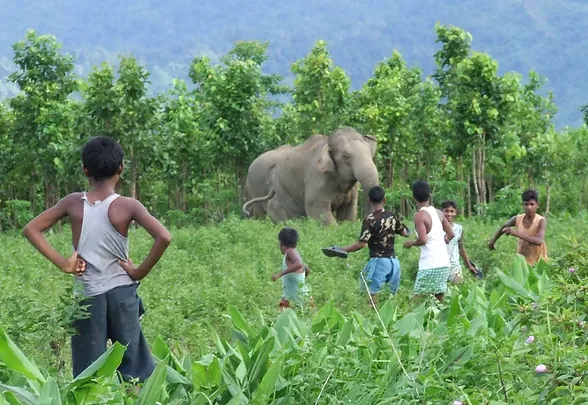It refers to struggles that arise when the presence or behavior of wildlife poses actual or perceived direct, recurring threats to human interests or needs, often leading to disagreements between groups of people and negative impacts on people and/or wildlife.
It occurs when animals pose a direct and recurring threat to the livelihood or safety of people, leading to the persecution of that species.

the goal of coexistence requires that at some level and in some form, humans must choose to share landscapes and natural resources with wildlife in sustainable ways.
In many parts of the world, people and animals are increasingly coming into conflict over living space and food. This is mainly due to expanding human populations and the continued loss of natural habitats. The impacts are often huge.
People lose their crops, livestock, property, and sometimes their lives. The animals, many of which are already threatened or endangered, are often killed in retaliation or to 'prevent' future conflicts.
Crop and livestock depredation: -
A variety of mammals like elephant, rhino, deer, wild pig and monkeys cause immense damage to crops. Damage caused by wild pig is the most prominent one as they have a wide distribution.
Carnivores such as leopard, tiger, and wild dog prey upon domestic livestock either by entering the settlements in the vicinity of their habitats or when these come into forest for grazing.
Causes: The social and ecological factors that contribute to human-wildlife conflict are widely spread. Most commonly, conflict is attributed to the growth of human populations and resulting increases in land or resource use from agriculture, transportation, and technology.
Habitat loss: As the global human population continues to push wildlife out of their natural habitats, conflicts are inevitable, which is why habitat loss is one of the most common threats to endangered animals. Habitat loss and destruction can result from deforestation, fragmentation by roads and development, or degradation from pollution, climate change, or invasive species.
Changing cropping patterns that attract wild animals to farmlands-Crop damage(the threat of crop damage may cause locals to feel more hostile towards an entire wild species, even if the source of conflict is coming from just one or a few individuals. )
Movement of human beings to forests for illegal collection of forest produce.
Movement of wild animals from forests area to human-dominated landscapes for food and fodder.
Natural calamities such as droughts also affect animals as it leads to sources of their food getting dried up, pushing them towards human habitats and crop fields.
Impacts:
Loss of life.
Injury to both animal and human.
Damage of crops and agriculture land.
Rise in violence against animals.
.jpeg)

Comentários